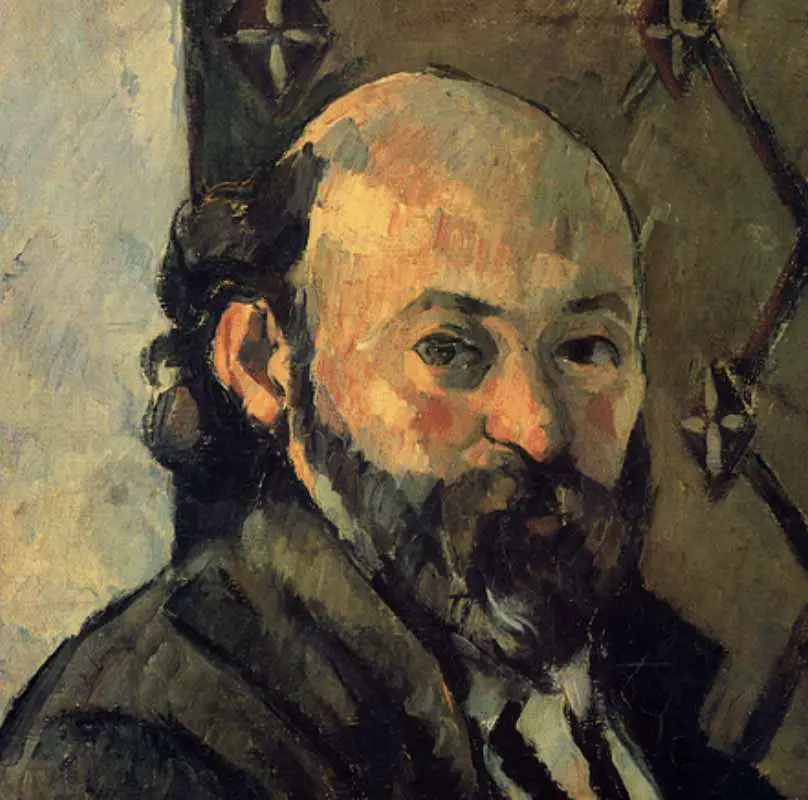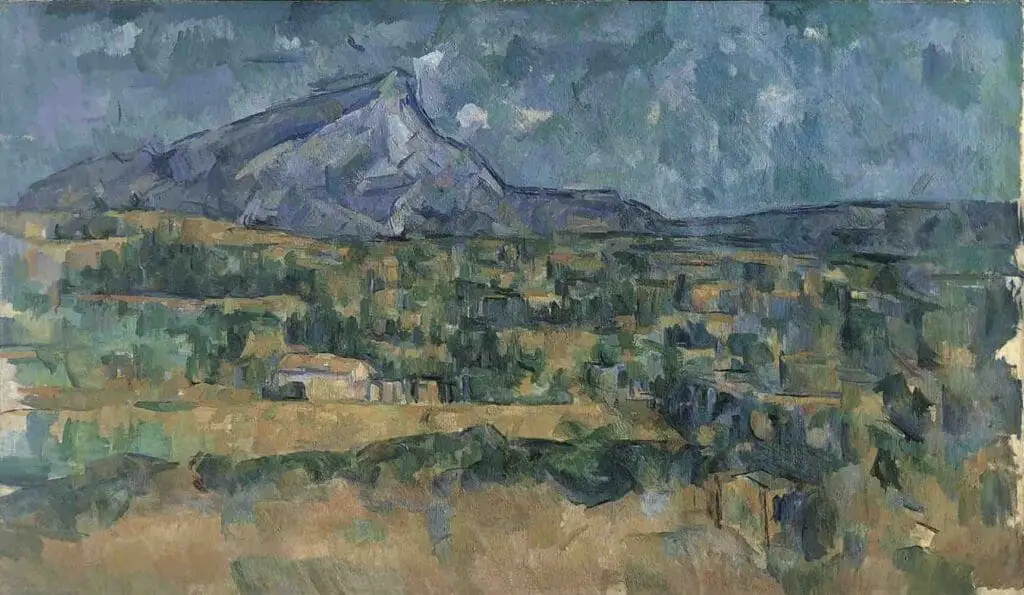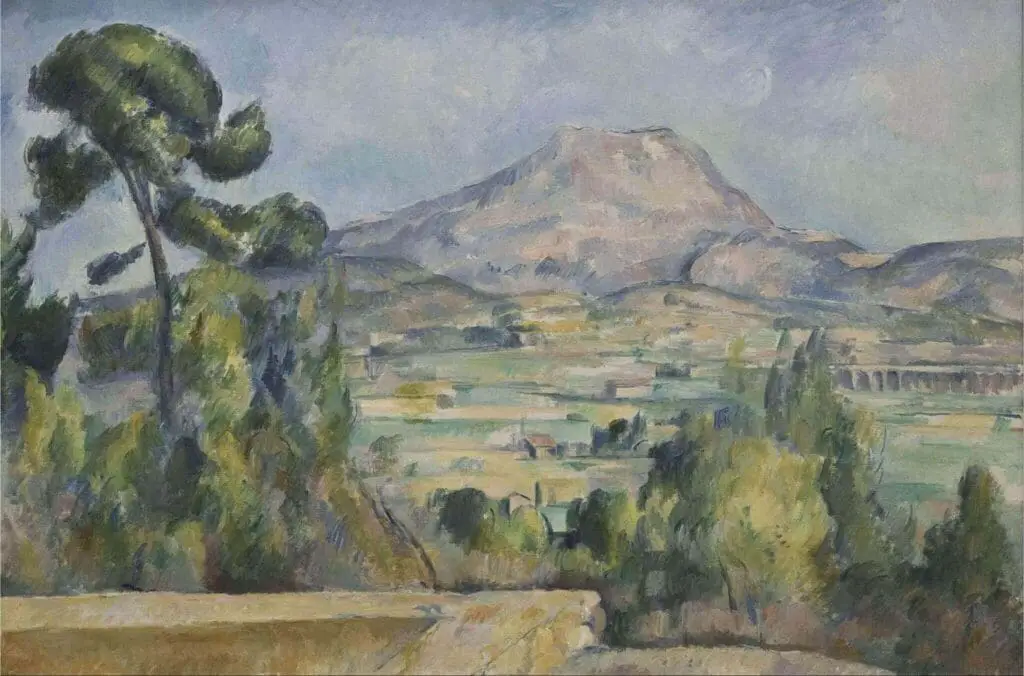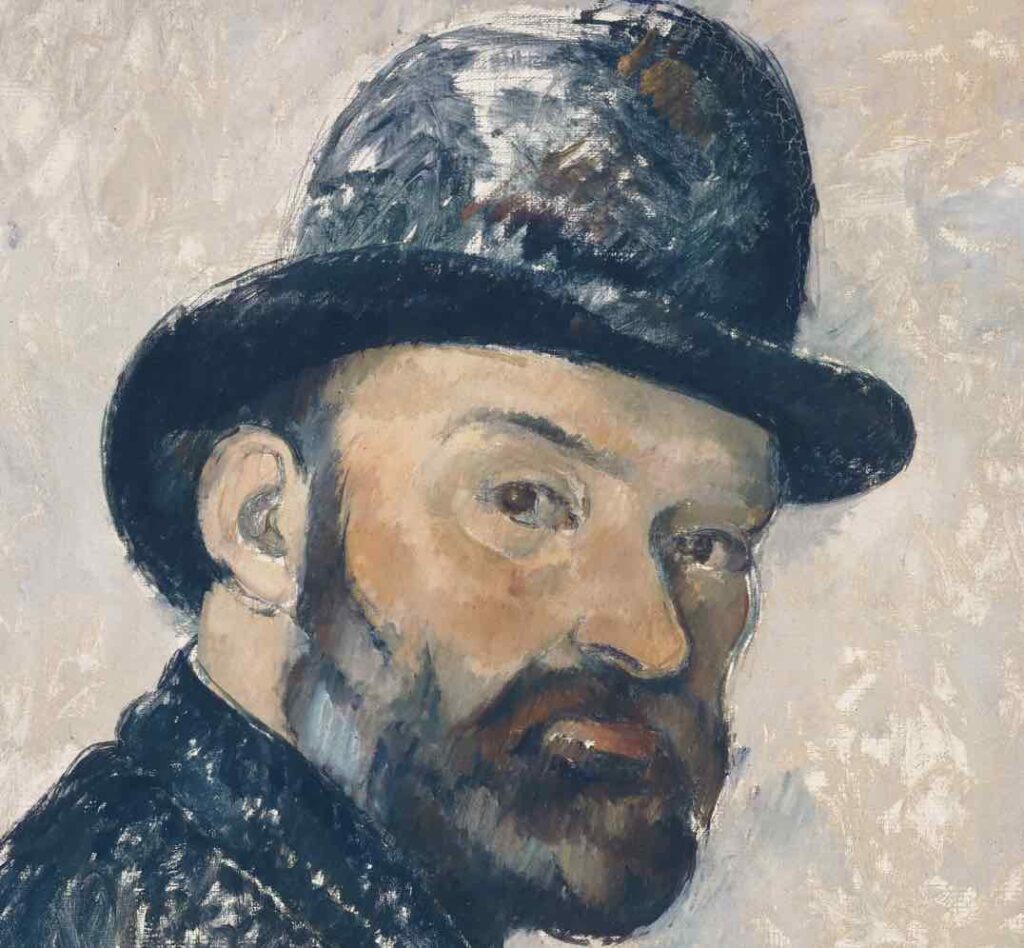The art landscape boasts a plethora of talented artists, each carving distinct pathways in the annals of art history. Paul Cézanne stands tall among them, anchoring the transition between Post-Impressionism and the budding Cubism movement of the early 20th century.
What makes Paul Cezanne unique is that his artistic method distilled objects to their rudimentary geometric essence and probed the wonders of visual perceptions; Cézanne set the stage for legends like Picasso and Braque. Read on as we journey through Cézanne’s illustrious career, from his Post-Impressionist beginnings to his profound influence on Cubism.
Table of Contents
- Paul Cézanne Is The Bridge From Post-Impressionism To Cubism
- Paul Cezanne – Transitioning To Cubism
- Related Questions
Paul Cézanne Is The Bridge From Post-Impressionism To Cubism
The world of art is teeming with many artists, each influencing the trajectory of art in unique ways. One such monumental figure is Paul Cézanne, a pivotal artist at the crossroads of Post-Impressionism and its development.
In Cubism of the early 20th century, his approach to art, which involved dissecting objects into their simplest geometric forms and exploring the realm of optical phenomena, paved the way for artistic giants like Picasso and Braque.
Post-Impressionism Defined
Post-Impressionism is an art movement that emerged in the late 19th century, following closely on the heels of the Impressionist movement. While Impressionism focused on capturing fleeting moments, the play of light on surfaces, and scenes of daily life, Post-Impressionism was less about direct observations and more about subjects’ emotional, symbolic, and abstract representation.

Artists like Van Gogh, Gauguin, and Cézanne were central to this movement, each bringing their distinct touch to their artworks.
Cézanne’s Post-Impressionist Influence
Paul Cézanne’s foray into art began deeply rooted in Post-Impressionist ideals. The Impressionist technique heavily influenced him, but he was keen on reintroducing a sense of order and structure into his works.
His paintings from this period, like the iconic “Mont Sainte-Victoire” series, showcase a beautiful blend of the fleeting quality of light captured by the Impressionists combined with his unique structural approach.



A sense of exploration characterized Cézanne’s work during this period. He often broke down objects and landscapes into rudimentary geometric forms, experimenting with different perspectives and tones.
Paul Cezanne’s use of color wasn’t just to depict reality; he used it to convey emotion and depth. This approach laid the foundation for the later modernist movements.
Paul Cezanne – Transitioning To Cubism
As Cézanne transitioned into the 20th century, so did his artistic style. Although Cézanne did not outrightly identify as a Cubist artist, his later works heavily influenced the Cubism movement.
His method of viewing subjects from multiple angles and deconstructing them into simpler geometric forms was a revolutionary step toward the Cubist style.
Cubism Defined
Cubism, pioneered by artists like Picasso and Braque, was an avant-garde movement that emerged in the early 20th century. The central tenet of Cubism was the idea of viewing subjects from multiple perspectives and representing them on a two-dimensional canvas, breaking them down into geometric forms like cubes, spheres, and cylinders.
Cézanne’s Influence On Cubist Artists
Cézanne’s exploration of form and penchant for simplifying objects into basic geometric shapes resonated deeply with artists like Picasso and Braque. Picasso once famously remarked:
“Cezanne is the father of us all.”
Pablo Picasso
In this statement, Picasso was underlining the profound influence Cézanne had on him and the development of Cubism.
One can trace Cézanne’s influence in Picasso’s early works, especially in how he breaks down forms and represents them from various angles. The parallel lines, the segmentation of objects, and the reshuffling of these segments in a manner that might appear disjointed but carries a profound sense of understanding and deconstruction of the subject—all these elements can be traced back to Cézanne’s artistic explorations.

Paul Cézanne, with his unique approach to art, bridged the gap between emotive Post-Impressionism and geometrically-inclined Cubism. His journey, from capturing the essence of subjects with a blend of Impressionistic techniques and structured forms to inspiring the Cubist movement, showcases the ever-evolving nature of art.
Cézanne’s work serves as a reminder that art movements aren’t isolated bubbles but points in a continuum. Artists draw inspiration from their predecessors, innovate, and inspire future generations.
Cézanne’s legacy as a linchpin between two significant art movements underscores this continuum and highlights his indelible mark on the art world.
Anita Louise Art is dedicated to art education, great artists, and inspiring others to find and create their art. We love art that uplifts and inspires. #ArtToMakeYouSmile! #ArtToMakeYouHappy!
If you are interested to see any of my art, you can find out more by clicking here. If you are interested in what inspires me and my paintings, you can discover more by clicking here.
We have a free newsletter and would love you to be part of our community; you can subscribe to the newsletter by clicking here. If you have any questions, I would be happy to talk to you any time. You can reach me, Anita, by clicking here.
Subscribe to our Anita Louise Art YouTube Channel filled with great videos and information by clicking here.
Related Questions
What Was The Impact Of Vincent Van Gogh On The Art World?
Van Gogh used color, form, and emotions in his art. He had a bright palette that was individualized for his time. Even though he did not see a lot of success during his life after he died, the impact of his art can be seen in both the Expressionism and Fauvism movements that were taking place in Europe.
By clicking here, you can learn more by reading What Was The Impact Of Vincent Van Gogh On The Art World?
Similarities Of Claude Debussy And Claude Monet
Claude Debussy and Claude Monet are both artists, but one is a musical composer, and the other is an artist. They are both considered Impressionists, and they were not afraid to break from the tradition of their day to create something new. Their work was considered to be a bold change for the days.
You can discover more by reading Similarities Of Claude Debussy And Claude Monet by clicking here.
Neoclassicism: A Harmonious Revival Of Ancient Art
Neoclassicism, or Classicism, emerged as a significant artistic movement in the 18th century in response to the ornate and frivolous Rococo style. It drew inspiration from the art and culture of ancient Greece and Rome, emphasizing simple linear design and archaeologically accurate depictions of Classical themes. With its focus on harmony, clarity, restraint, universality, and idealism, Neoclassicism left an indelible mark on the visual arts.
You can learn more by reading Neoclassicism: A Harmonious Revival Of Ancient Art by clicking here.

